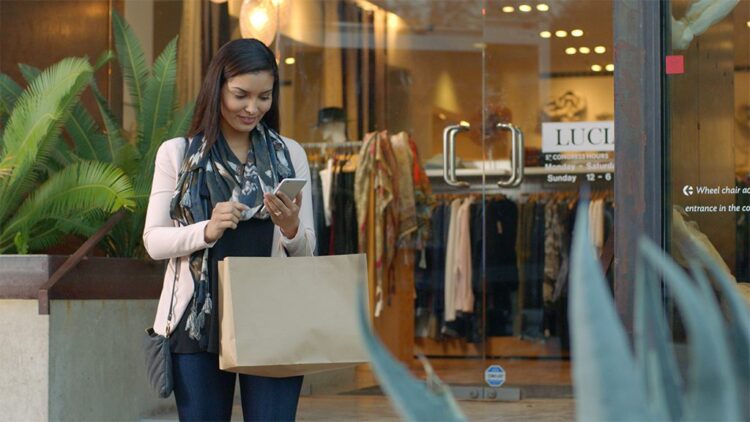With store closures skyrocketing in recent years, the retail sector is poised to lose over 100 million square feet of space in 2018. This equates to roughly 3,400 expected store closures stemming from what were once thought to be stable big-box chains, like Toys R Us, Sears, and Sam’s. These closures are a harrowing reminder that consumer expectations are always changing. Household names like JC Penney, Bebe, Radio Shack, Sports Authority, Cabela’s, Payless, Macy’s, and countless others are experiencing the pain striking the retail industry.
The traditional retail landscape has no doubt changed partly due to the global eCommerce industry, which is expected to grow to $3.4 trillion by 2019. Some retailers and brands may feel this is a threat to stores, but we see it as an opportunity. With changing customer preferences there must be a change in tactics. Consider these five unconventional tips to increase foot traffic to your stores:
- Buy Online Pick Up In Store (BOPIS)
A sure-fire way to increase foot traffic is through BOPIS. It is the perfect example of marrying eCommerce with traditional retail in stores. BOPIS gives customers greater control and convenience when purchasing their items. Additionally, when BOPIS customers come to pick-up, our research has found that these customers make another purchase at least 40% of the time. The retailer who can flawlessly implement flexible fulfillment options will win the day. But a word to the wise: In order for customers to continue to use BOPIS over and over again, the entire experience needs to be easy and streamlined. It’s always a good idea to check in with in-store operations and get feedback from your customers. - Local Inventory Availability
Simply put: if the consumer can’t see on the website that what they want is on the store shelf, they won’t risk a trip to the store. As stated above, customer expectations are changing, and our latest research found that 64% of customers expect to be able to view local product availability prior to visiting the store. Additionally, 81% of consumers said they have looked up inventory on a retailer’s website before visiting the store and 80% are less inclined to visit a store if a website does not provide current product availabilityThis is an enormous set of people who will make their purchase locations based on whether it’s obvious their desired item is available. Consumers have greater choice between individual retailers and will make decisions in their self-interest. Local inventory availability is a giant flag to customers that you have the items they need, right now. The visibility provided by a robust order management system is sure to address this. Find out everything you need to know about order management in this eBook, The Ultimate Guide to Order Management. - Personalized Promotions
Retailers have the responsibility of using their online real estate to drive sales, and each pixel on your customers’ screens can be used to better serve them and your stores. Offering in-store promotions, even through email, will help build brand loyalty and invite customers to experience your stores.Customers are moving toward a distaste in generalized targeting, and a real thirst for personalized promotions. Kibo’s patented machine learning engine combines layers of algorithms with the online data hub to create a composite framework that delivers more meaningful results. With advanced individualization and a store-centric call to action, customers will find themselves in your store more frequently than if you were using a typical mailer. - Transform Stores Into Experience Centers
If the traditional retail store is failing on its own, then something must change. In addition to working hand in hand with eCommerce, a great way to increase foot traffic is to transform your stores into experience centers. It’s easy to look to popular beauty retailers as good examples of stores-as-experience-centers. In another example, some stores are implementing interactive dressing rooms with smart mirrors. Even Amazon has chosen this path, with their physical bookstores providing one of the most coveted experiences of their online shop: product reviews.And don’t forget about the power of the store associate. If the store associate is equipped with knowledge about a product, if only simply on a tablet, it makes in-store purchasing that much easier for the consumer. Drive brand loyalty and foot traffic by providing a consistent, unique, and fulfilling shopping experience. - Go Mobile
Go where your customers are: on their phones. Sticky sites build loyalty and raise your conversion rates. Any time spent on your site that creates a positive experience will surely capture attention, one of our most precious commodities. Customers are frequently on their phones because they are on the go. If your website isn’t optimized for mobile, no matter if you have BOPIS and local inventory visibility, if the customer can’t see that on their mobile phone then they simply won’t use it.Increase in-store foot traffic by increasing convenience via mobile websites. If a parent waiting to pick up their kid from soccer practice can easily use your website to get a question answered, even something as small as hours of operation, then they are much more likely to make a stop at your store before heading home instead of skipping you all together. Forrester’s annual retailer survey ranked mobile at the top of the list of strategic priorities for the fourth year in a row. This blog has 4 ideas about how to think about stores with mobile.
The retail space is certainly changing, and companies must take a more nimble, calculated approach to promoting and selling their products. Those keeping up are the ones who place high priority on the complete unified omnichannel experience. Don’t give up on stores, just use them differently. How have you increased foot traffic?




